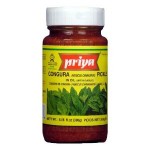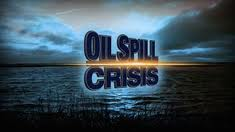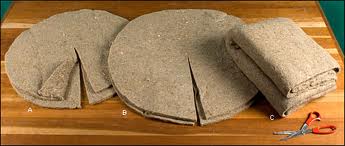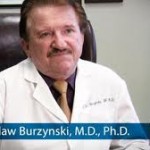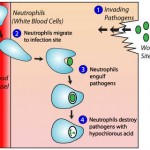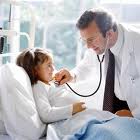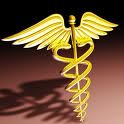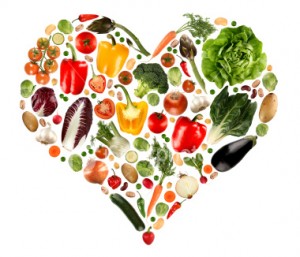FDA Disclaimer
This treatment has not been evaluated by the FDA and it never will be evaluated by the FDA for two reasons:
1) This treatment only costs about $50 and it requires many, many, many millions of dollars to get a treatment approved by the FDA, and
2) The FDA does not research cancer treatments.
Introduction
This alternative cancer treatment, by itself, has been shown to be very effective against melanoma and squamous cell carcinoma. It should also be highly effective against uterine cancer since uterine cancer also spreads via microbes (e.g. “seeds”) and uterine cancer is also highly associated with microbes (though uterine cancer is also associated with root canals).
It should also be highly effective against AIDS. As a minimum it will help keep AIDS in check.
For other types of cancers its effectiveness has not yet been determined. However, because melanoma and squamous cell carcinoma include stationary cancer cells, and because this treatment is effective for these two types of cancer, it is expected that this treatment will be effective on other kinds of cancer.
This treatments has two major advantages over many other alternative cancer treatments:
1) This treatment was designed to revert cancer cells into normal cells, meaning if it is used properly it will not cause any type of swelling or inflammation, and
2) This treatment can be taken completely transdermally, meaning through the skin. This means those on a feeding tube or I.V. can use this treatment.
Critical Warnings
Do NOT Use This Treatment With Prescription Drugs
The DMSO in this treatment may enhance the effectiveness of prescription drugs, thus the cancer patient may effectively overdose on their prescription drugs. Use this treatment with prescription drugs with caution and close observation.
Warning For Women Who Are, or Who Might Be, or Who Might Become Pregnant
Women who are pregnant, might be pregnant, might become pregnant, or are nursing, should NOT take this treatment. The affect on an unborn fetus could be fatal to the fetus due to the high doses of chlorine dioxide in this treatment combined with the extremely low weight of the fetus!! In addition, fetus have many undifferentiated cells and this treatment will TARGET cancer cells, which are also undifferentiated!! Thus, this treatment may inadvertantly target undifferentiated fetal cells!!!!
TAKE THIS WARNING VERY, VERY SERIOUSLY!!!
Tumors
This treatment is not designed to shrink tumors, so if any tumors are in dangerous locations (such as they are pressing on the bile duct) do not use this treatment. use one of the treatments which shrinks tumors, such as the Cellect-Budwig protocol.
Also, if the patient has swelling in their brain, or any other dangerous condition, seek medical help immediately.
Cancer Theory Section
What Causes Cancer?
What causes cancer? Most people believe that it is DNA damage that causes cancer. While in rare situations, DNA can have a negative affect on a person’s immune system, DNA normally has absolutely nothing to do with the development of cancer.
The fact is that cancer is caused by a special type of microbe which gets inside of normal cells and turns the cells cancerous.
Actually, everyone has cancer cells forming in their body at all times. The immune system generally safely kills them. Thus, a weakened immune system, and many other things, can allow cancer cells to overcome the immune system. But the actual formation of cancer cells is exclusively caused by microbes which get inside of normal cells.
Dr. Royal Rife did an enormous amount of research into the relationship between microbes and cancer in the 1930s. He would inject mice with a virus and in 100% of the cases the mice would get cancer.
Dr. Rife proposed a cure for cancer which did nothing but kill these viruses. His cure was 100% successful. However, note that his cure had no intention of killing cancer cells or fixing DNA (which had not been discovered in the 1930s); its only goal was to kill microbes in the body. Once the microbes were dead the cancer cells were able to revert back into normal, differentiated cells.
It is very doubtful that Dr. Rife knew that the critial microbes which needed to be killed were inside the cancer cells, but electromedicine will kill microbes inside or outside of cancer cells.
But almost all natural substances do not normally get inside of cells, thus it is almost impossible for natural substances to kill the microbes inside the cancer cells. Natural substances can kill cancer cells and build the immune system, but they generally cannot kill microbes inside the cancer cells.
A detailed discussion of how microbes cause cancer can be found in another article. The cancer theory article also discusses the four different categories of treatments which can cure cancer. See this article:
The Theory of Cancer
You may have noted in the article just linked to that as long as microbe(s) are inside cancer cells, the cell is unable to revert into a normal cell.
The purpose of this treatment is to deal with cancer in two different ways:
1) By using DMSO as a “carrier” to get chlorine dioxide inside the cancer cells, the intent is to kill the microbes inside the cancer cells,
2) By using chlorine dioxide, all microbes in the bloodstream will be killed (technically: attenuated).
Because the immune system communicates using electrical signals, and because microbes emit electrical signals which interfere with the immune system communications, by getting rid of microbes in the bloodstream the immune sytem will be supercharged (this was the entire basis of using the Bob Beck Protocol for cancer).
What Is DMSO?
This treatment includes DMSO, which is technically called: dimethyl sulfoxide. DMSO is a purely natural product from the wood industry. Many, many millions of people have used DMSO around the world. Not one person has died from its use.
However, many people have difficulties working with DMSO. In some cases there is a skin rash which is simply too severe to continue the treatment. When you get your bottle of DMSO put one drop on your skin, spread it around a little bit and see if you have an allergic reaction (i.e. severe rash). If not, an hour later put 10 drops on your skin and spread it thin. If you do not have a reaction, go ahead with the treatment.
If you want to know more about DMSO, see this website:
http://www.dmso.org/articles/information/muir.htm
The Importance of the DMSO
This treatment uses DMSO and chlorine dioxide. Chlorine dioxide will be discussed below, but the big picture is that chlorine dioxide kills microbes and DMSO “carries” the chlorine dioxide inside of cancer cells.
The theory behind adding the DMSO is that the DMSO will bind to the chlorine dioxide (which is a known fact); then allow the DMSO to carry the chlorine dioxide through the skin (which is a known fact); then, once inside the skin, allow the chlorine dioxide / DMSO molecules to target the cancer cells (which DMSO is known to do); then the DMSO will drag the chlorine dixoide into the cancer cells (which DMSO is known to do); and then once inside the cancer cells the chlorine dioxide should kill the microbes inside the cancer cells (this is the only part that is speculative, but it is reasonable because chlorine dioxide works by chemical actions, not physical actions).
If you kill the microbe(s) inside the cancer cells, the cells will revert back to being normal cells without any type of debris from dead cancer cells. Thus, there is no swelling or inflammation. In fact, DMSO is known to help reduce swelling and inflammation.
But regardless of how many cancer cells it reverts into normal cells, what is known is that DMSO with chlorine dioxide will kill any microbes in the blood and thus will help build the immune system. Furthermore, by purely chemical means it will build the immune system in other ways.
What Is Chlorine Dioxide?
Chlorine dioxide has been studied by scientists for many years and has been mentioned in many scientific journals. However, it was Jim Humble who brought chlorine dioxide to the forefront of alternative medicine.
Jim used 15 drops of chlorine dioxide, followed one hour later by another 15 drops, to cure malaria. AIDS/HIV can also be cured with chlorine dioxide, though the administration of chlorine dioxide for AIDS uses injections. However, this article describes a very good AIDS treatment which may be just as effective as injections.
Another thing Jim Humble discovered is that chlorine dioxide can be made at home by mixing stabilized oxygen (also known as: sodium chlorite) with an “activator.” It is the “activator” which converts the sodium chlorite into chlorine dioxide.
Normal stabilized oxygen (e.g. Vitamin O, Aerobic O7 or Aerobic KO7) is usually between 3% and 7% sodium chlorite. This is NOT the same thing as table salt, which is sodium chloride.
Stabilized oxygen (i.e. sodium chlorite) has been used in alternative medicine for several decades. It is used primarily to prevent viral infections, such as colds and the flu, and to treat allergies.
The Miracle Mineral Supplement (MMS) is 28% sodium chlorite. The reason for this mixture is so that it will react more readily to the “activator” to make chlorine dioxide.
Vendors may sell bottles which recommend adding MMS to some form of vinegar. This is old technology. DO NOT USE VINEGAR WITH MMS!!! Vinegar can actually feed yeast infections.
The three things you can mix with MMS are (these are the three activators):
1) fresh squeezed lemon juice, which you squeeze yourself (filter out the particles),
2) fresh squeezed lime juice, which you squeeze yourself (filter out the particles), or
3) 10% citric acid (in liquid form)
Any of these three items will chemically react to the sodium chlorite to create chlorine dioxide. The liquid citric acid is the preferred item to mix with MMS. Liquid citric acid can be purchased over the Internet in liquid form or powdered form. If purchased in powdered form, it must be converted to liquid form before use. MMS should always be purchased from the vendor of MMS. MMS vendors have high turnover of citric acid, thus the product is always fresh.
10% citric acid, in liquid form, mixes better with sodium chlorite than lemon juice or lime juice. When using chlorine dioxide transdermally, meaning through the skin, 10% citric acid also penetrates the skin better than lemon juice or lime juice.
The things you should NOT mix with sodium chlorite are just as important as the things you should mix with it. For example, do NOT use any type of bottled lemon juice, such as ReaLemon, as it may have vitamin C added as a preservative.
The bottom line is to always use 10% citric acid, purchased from a vendor of MMS, or if you cannot get that, then use fresh squeezed lemon or lime juice (which you squeezed yourself). Nothing else is acceptable as an activator.
Also note the Miracle Mineral Supplement bottle should NOT be exposed directly to sunlight.
While you can buy chlorine dioxide over the internet, this website recommends that you make it yourself at home. You should make it at home and use it within two hours.
For more information about chlorine dioxide, see:
http://www.miraclemineral.org/
Items That Can Neutralize Chlorine Dioxide
This treatment can easily be neutralized by Vitamin C, immune builders, Protocel, Cantron, and other antioxidants. Because it is so sensitive to other substances, this treatment should generally be used by itself. Even Cellect includes immune builders, which can neutralize this treatment.
What this means is that if you want to use two alternative cancer treatments, this being one of them, in many cases the two protocols will have to be alternated (e.g. 10 days on one protocol, 10 days on the other protocol; and continue alternating the treatments every 10 days).
The following information from the Bill Henderson Newsletter will clarify these points:
- They had started with just 2 drops of the MMS and worked up to a dose of 15 drops, twice a day. for ten days. There was no noticeable effect — no nausea, no diarrhea — nothing. They were aware of the effect of Vitamin C on the MMS, so they had moved the Heart Plus and Daily Advantage to later in the day.They did some research, though, and found that the Beta 1,3D Glucan immune stimulant is a strong anti-oxidant also. They were taking it at roughly the same time as the MMS. As soon as they stopped taking the Beta Glucan for a couple of days, the MMS had an immediate effect — diarrhea, cleansing — the whole thing.…
(Chemist) I am a chemist who bought your (previous edition) book and am receiving your e-newsletter (and I have cancer). I am not surprised to finally read in letter #114 that anti-oxidants ‘kill’ MMS. They should. And that’s what I have been telling a friend of mine who has lung cancer. However, anti-oxidants stay in the body for more than three hours. Ideally, if you have enough protection, you should have a more or less permanent steady state of them. The beta-glucan instance, where the people waited three DAYS, certainly suggests this also. I am not sure what the solution to the problem is, but if I were taking MMS (and I intend to) I would stop all anti-oxidants for a while to let the MMS work unhindered.”(Bill Henderson) As I mentioned in my last newsletter, the MMS is still in an experimental stage. I would certainly heed Robert Peterson’s advice. At least try discontinuing your use of the Beta Glucan, the Heart Plus and the Daily Advantage for a couple of weeks while you take the MMS. You need to be the judge of whether it is working for you. If you experience the normal MMS diarrhea after you stop the anti-oxidants, then it is probably working for you. This should not continue for long (a day or so). Then, you should begin to have normal bowel movements with no constipation.
Bill Henderson Newsletter
In other words, do NOT use the chlorine dixoide protocol at the same time as any substance which has Vitamin C, or any other antioxidant, including immune builders. Wait at least a couple of days after discontinuing these treatments before starting the chlorine dioxide treatment.
Taking Chlorine Dixoide: Oral or Transdermal?
As the above quotes suggest, Vitamin C, other antioxidants and immune builders, should not be taken during the same time periods as MMS/Chlorine Dioxide. This is good advice.
However, the quotes above also indicate that diarrhea, nausea, vomiting, etc. are part of this treatment. This is true only if you take this treatment orally. It is the stomach which is causing these side-effects. If you take this treatment transdermally, meaning through the skin; the stomach, and the side-effects, can be totally avoided.
While most websites on chlorine dioxide suggest taking it orally, this website strongly suggests you take it transdermally. The only side-effect of taking this treatment transdermally, if you do it right, are possible slight burnings on the skin. This can be controlled by rotating where you rub it on your skin, spreading it very thin over a wide area of skin and by using skin creams to stop the burning, as long as the skin creams do NOT contain any antioxidants.
Skin creams should NOT be used for at least 15 minutes AFTER the administration of the DMSO.
But a more important advantage of taking it transdermally is that with transdermal applications, higher doses can be taken, and the high doses can be achieved much more quickly.
Patients with lyme disease, for example, may never be able to achieve doses higher than 1/2 drop (of MMS) if they use the treatment orally. But this is because of the stomach, not the body or the blood. By taking it transdermally, all stomach side-effects can be avoided and normal and even high doses can be achieved easily.
The use of DMSO for cancer patients is critical. Chlorine dioxide, by itself, will not get inside of cancer cells. The main reason for adding DMSO is because DMSO will “open up” cancer cells so chlorine dioxide CAN get inside of cancer cells. It is inside the cancer cells where chlorine dioxide is able to revert cancer cells into normal cells.
If you insist on taking chlorine dioxide orally, use DMSO a half-hour BEFORE taking the chlorine dioxide. Here is the oral use of chlorine dioxide article:
Chlorine Dioxide – Orally
More Information About Chlorine Dioxide
Chlorine dioxide is a molecule which is new in the fight against infections and cancer. It is particularly effective against cancers which are commonly associated with microbes. This includes melanoma, squamous cell carcinoma (both of these cancers spread via microbes), breast cancer (which is almost always associated with infections), cancers associated with yeast infections (e.g. uterine cancer), etc. In fact, chlorine dioxide by itself has cured advanced cases of melanoma. Adding the DMSO adds to its effectiveness in treating cancer.
Another advantage to taking chlorine dioxide transdermally is that for those with cancer, lyme disease, or other diseases where the disease has a localized presence, the chlorine dioxide can be taken through the skin right above the location of the disease.
For skin cancers, the chlorine dioxide may not be able to be put directly on the cancer. It depends on whether it is too painful. If it is not too painful, then put the mixture directly onto the skin cancer. If it is too painful, and if you are treating skin cancer, go to the home page of Cancer Tutor and search for “skin cancer” for other treatments.
Miracle Mineral Supplement Information: eBook 1 (free) and eBook 2 (About $10):
www.miraclemineral.org/
Important Comments
It should be remembered from the Stage IV” article (Stage IV article) that killing cancer cells is only half the battle with cancer. Protecting and strengthening the non-cancerous cells is just as important.
Thus, during this treatment, it is essential that the cancer patient be on a strong “cancer diet,” meaning an “anti-cancer” diet.
For example, as with all “cancer diets,” AVOID: sugar, refined flour, animal proteins, etc. during this treatment, as these things, and many other foods, feed cancer cells.
Ingredients Needed to Make a Batch of Chlorine Dioxide / DMSO
The ingredients in the protocol consist of:
1) MMS (Miracle Mineral Supplement – 28% sodium chlorite) – at least 4 bottles,
2) 10% citric acid (may come in powdered or pre-mixed liquid form),
3) DMSO – two 8 ounce bottles,
4) High quality skin cream which does NOT contain any added antioxidants
To buy MMS and 10% citric acid, here are two different vendor product lines:
Global Light Network
H2O Air Water America
There are many other vendors of MMS if you wish to use Google. Whatever vendor you choose make sure the package also comes with a form of citric acid.
DMSO usually comes in the form of 99.9% pure DMSO, mixed with 30% water. This makes a 70/30 ratio. Do NOT use DMSO with less than 30% water. Also, DO NOT use a DMSO gel or DMSO cream. These will not bind to chlorine dioxide!!!
Here is one of many vendors of DMSO on the Internet where you can obtain liquid DMSO:
http://www.myvitanet.com/dmsoliq70con.html
Note: Because MMS is sold as a “water purifier” and because DMSO is sold as a “solvent” (due to potential FDA persecution) most health food stores are reluctant to sell these products.
How to Make a Batch of the: DMSO / Chlorine Dioxide Mixture
How and when to take a batch of the DMSO / chlorine dioxide mixture will be discussed in a moment, but first, we need to understand how to make a batch.
READ THIS SECTION SEVERAL TIMES to make sure you aren’t missing anything. Especially read it AFTER making one or two batches!! You would also be smart to have a second person look at the instructions to make sure you both agree on how to make a batch.
Step 1: Measuring the MMS
Using the dropper on the lid on the bottle of MMS, put exactly 15 drops of MMS in a small bowl.
If you weigh between 110 pounds and 130 pounds, use 12 drops instead of 15 drops. IF you weigh 110 pounds or less, use 9 drops instead of 15 drops.
At this point you should ADD the correct number of drops of MMS to a small bowl.
Step 2: Measuring the Volume of the Activator
The “activator” will either be citric acid or lemon juice or lime juice. Each will now be discussed.
If the citric acid comes in powdered form, you need to mix it with distilled water before using it. Here is the formula for what to put in the empty bottle:
1) Put 2 TEAspoons of the citric acid powder in the bottle,
2) ADD 3 ounces (i.e. 6 TABLEspoons) of water to the bottle (preferrably distilled water or reverse osmosis water).
Note: If the vendor’s instructions are different than the above instructions, use the vendor’s formula.
This will fill about 3/4 of the blue or brown bottle. This formula has the correct 10% citric acid mixture. Use doses for the activator using the blue or brown bottle.
Lemon Juice or Lime Juice
If you use lemon juice or lime juice as the activator, make sure you filter out all particles using a common kitchen strainer.
The Volume of the Activator
Regardless of your weight, add One TEAspoon of the “activator” (e.g. 10% citric acid) to the MMS.
At this point you should ADD the correct volume of the activator (citric acid, lemon juice or lime juice) to the MMS you already put in the small bowl.
Step 3: Your FIRST Wait of 3 Minutes
AFTER MIXING the MMS (i.e. sodium chlorite) with the activator, stir the mixture, then let it sit for 3 minutes, stirring the mixture every 30 seconds. This three minute wait creates the chlorine dioxide.
Step 4: Measuring the DMSO
AFTER the 3 minutes needed to make chlorine dioxide, add the liquid DMSO to the mixture.
In the same small bowl add 1 and 1/4 TEAspoons of DMSO. In other words, this is added to the chlorine dioxide you made above regardless of your weight.
Step 5: Your SECOND Wait of 3 Minutes
After ADDING the DMSO to the chlorine dioxide you need to mix the mixture, then wait an additional 3 minutes, stirring the mixture every 30 seconds.
This is the SECOND TIME you have waited 3 minutes. This time you are waiting for the DMSO to bind to the chlorine dioxide.
After this second wait of 3 minutes you have a mixture which is defined to be “One Batch” of Chlorine Dioxide / DMSO.
Summary of Making the Batch
The steps above can be summarized thusly:
1) Put 15 drops (or 12 drops or 9 drops) of MMS in a small bowl,
2) Add ONE TEAspoon of the “activator” (citric acid, lemon juice or lime juice),
3) WAIT 3 minutes (stir at first and every 30 seconds) to make the chlorine dioxide,
4) Add 1-1/4 TEAspoons of DMSO,
5) WAIT an additional 3 minutes (stir at first and every 30 seconds) for the DMSO to bind to the chlorine dioxide.
You have now made one batch of: DMSO / Chlorine Dioxide!!
Putting DMSO / Chlorine on the Skin (Transdermal)
Now you can rub the mixture onto your skin. Spead the mixture so that it is thin on your skin. This way it will penetrate faster and will create less of a skin rash. It should be spread very thinly, over a wide area of skin. This will create less of a rash.
It should be mentioned that latex gloves, rubber gloves or any other kind of gloves should NOT be used to spread any mixture containing DMSO. The DMSO can pull the materials in these gloves through the skin. Always use bare hands to spread the mixture, no matter who is spreading the mixture.
NO sooner than 15 minutes after spreading the mixture a skin cream, which has no antioxdants, can be used.
The Second Time in the Same Day
If you are using the DMSO mixture transdermally TWICE a day, use a different spot of skin the second time you make the mixture. For example, if you used the left and right arm to spread the mixture the first time, then use the left thigh and right thigh the second time you spread this mixture on your skin.
By doing this, no spot of your skin will be used more than once per day. This gives your skin an entire day to recover.
NO sooner than 15 minutes after spreading the mixture a skin cream, which has no antioxdants, can be used.
When To Take the: DMSO/Chlorine Dioxide Mixture
The Chlorine Dioxide / DMSO protocol should be taken twice a day. The doses should be taken 12 hours apart or as close to 12 hours apart as possible.
For example, a person may take one batch at 8:00 AM (i.e. 0800) and another batch at 8:00 PM (i.e. 2000).
Each “dose” of the mixture should be taken one-half hour after a pure dose of 2 TEAspoons of DMSO.
So, for example, suppose you are taking the morning batch:
1) At 8:00 AM take 2 TEAspoons of DMSO
2) At 8:30 AM take the DMSO/chlorine dioxide mixture
Then, for the evening dose:
1) At 8:00 PM take 2 TEAspoons of DMSO
2) At 8:30 PM take the DMSO/chlorine dioxide mixture
Because the DMSO may cause bad breath, if a person has to leave their house during the day, they may want to use breath mints. If a second person spreads the DMSO on the skin of the patient, they will also have bad breath and will not be able to notice the breath of the cancer patient.
About the Morning Dose
Melanoma, squamous cell carcinoma and uterine cancer patients do not need to use any DMSO during the morning dose, if and only if they can take the chlorine dioxide orally. The reason is that the key to treating these kinds of cancer is two-fold:
1) Stop the spreading of cancer,
2) Kill or revert stationary cancer cells.
The morning dose, even without DMSO, will stop the spread of the cancer (in fact, that is why the doses are 12 hours apart) because these cancer spread via microbes in the bloodstream. The evening dose will help handle both of the goals.
For ALL OTHER types of cancer, the DMSO in the morning and evening is required. It is the DMSO that gets the chlorine dioxide inside the cancer cells. |
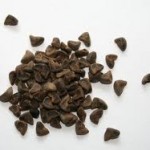
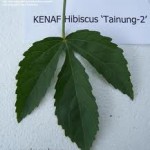
 KENAF (Hibiscus Cannabinus)
KENAF (Hibiscus Cannabinus) 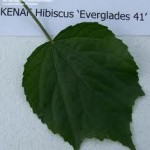

 rth-friendly. All you need is water and fertilizer to grow as high as 20 feet in about 150 days. Having no natural predators, growing Kenaf nourishes the soil and cleans the air. The flowers are pretty yellow-white blooms with a deep red center that opens at sunrise and closes at night. Harvesting Kenaf three times during the growing season (to 5 feet) produces tender young leaf for highest nutrition (wet or dry). Food for humans–forage for livestock.Growing Kenaf for the rest of the season yields stock and core material that can be made into paper and textile products, animal bedding, soil remediation (pollution buster–water, land and air). Highest organic oil absorbancy to a 92% clean up, starting as soon as you apply it. One pound of Kenaf absorbs 1.66 gallons of oil or over 11 pounds of oil. Amazingly absorbs hydrocarbon products up to 12 times its own weight. Environmentally safe and correct. A great alternative to plywood (save the old growth trees). For the garden it’s a great mulch.
rth-friendly. All you need is water and fertilizer to grow as high as 20 feet in about 150 days. Having no natural predators, growing Kenaf nourishes the soil and cleans the air. The flowers are pretty yellow-white blooms with a deep red center that opens at sunrise and closes at night. Harvesting Kenaf three times during the growing season (to 5 feet) produces tender young leaf for highest nutrition (wet or dry). Food for humans–forage for livestock.Growing Kenaf for the rest of the season yields stock and core material that can be made into paper and textile products, animal bedding, soil remediation (pollution buster–water, land and air). Highest organic oil absorbancy to a 92% clean up, starting as soon as you apply it. One pound of Kenaf absorbs 1.66 gallons of oil or over 11 pounds of oil. Amazingly absorbs hydrocarbon products up to 12 times its own weight. Environmentally safe and correct. A great alternative to plywood (save the old growth trees). For the garden it’s a great mulch.  little sucks a lot. Kenaf manufactured locally by American farmers, is all natural and biodegradable. Kenaf absorbs up to 12 times its own weight. Kenaf
little sucks a lot. Kenaf manufactured locally by American farmers, is all natural and biodegradable. Kenaf absorbs up to 12 times its own weight. Kenaf 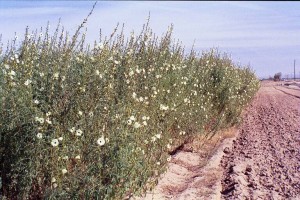 assimilates pollution. Kenaf is a remedy for balancing pollution from industrial, military and lakes. Store 2-5 pound bags of Kenaf in cars, boats and trucks. Helps keep available proven clean up materials close by. Do your part–clean the ground and water. It will help clean our air, an incentive to reduce greenhouse effects. Need Seeds? Inquire about a Kenaf Presentation. Contact us at WellnessWillpower.
assimilates pollution. Kenaf is a remedy for balancing pollution from industrial, military and lakes. Store 2-5 pound bags of Kenaf in cars, boats and trucks. Helps keep available proven clean up materials close by. Do your part–clean the ground and water. It will help clean our air, an incentive to reduce greenhouse effects. Need Seeds? Inquire about a Kenaf Presentation. Contact us at WellnessWillpower.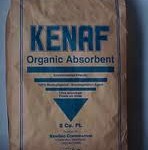
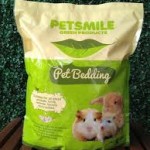
 ummary: America has studied kenaf enough for 80 years. I have been knocking on heads to start businesses for 12 years now!
ummary: America has studied kenaf enough for 80 years. I have been knocking on heads to start businesses for 12 years now!
